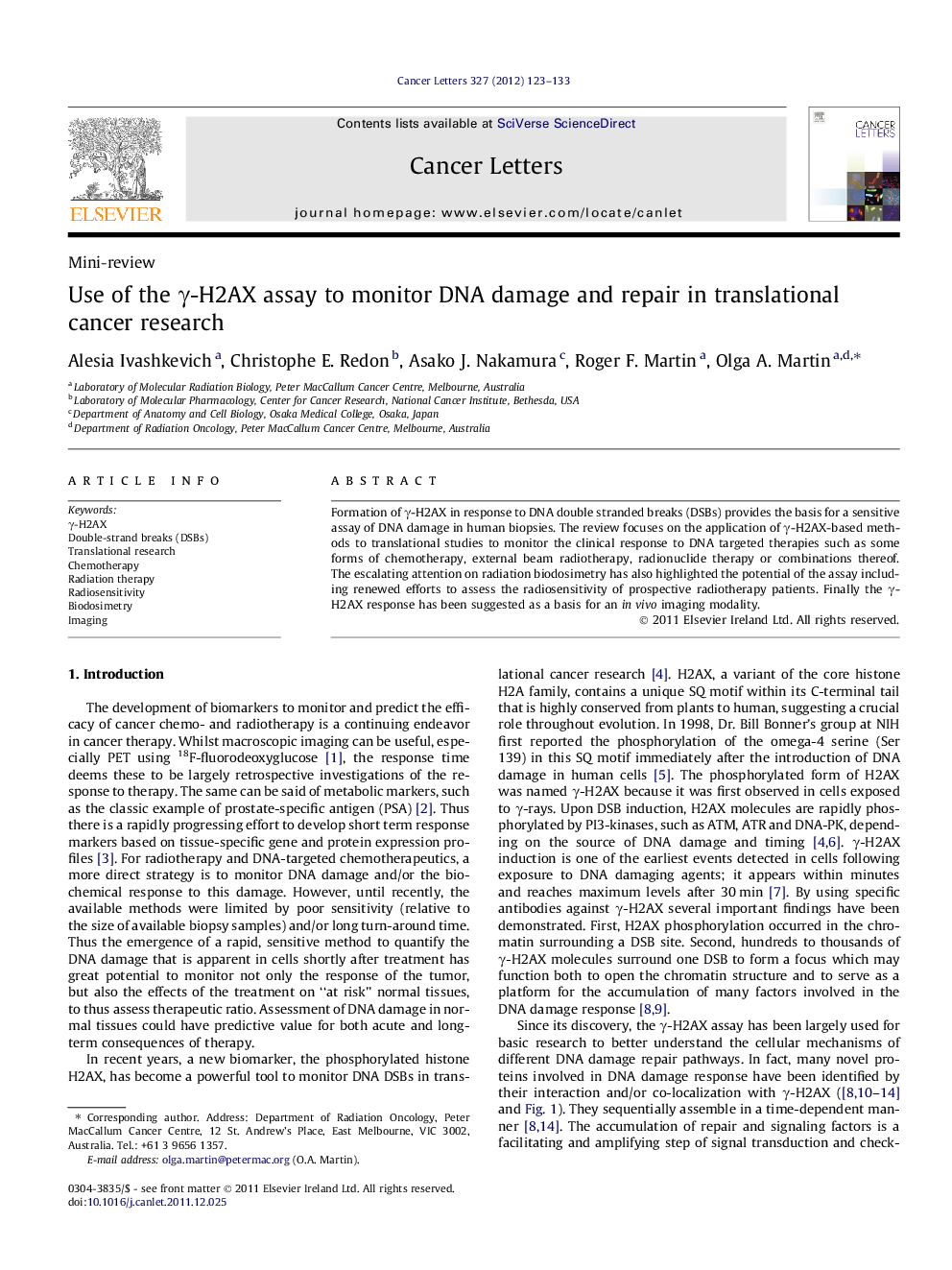| Article ID | Journal | Published Year | Pages | File Type |
|---|---|---|---|---|
| 8435834 | Cancer Letters | 2012 | 11 Pages |
Abstract
Formation of γ-H2AX in response to DNA double stranded breaks (DSBs) provides the basis for a sensitive assay of DNA damage in human biopsies. The review focuses on the application of γ-H2AX-based methods to translational studies to monitor the clinical response to DNA targeted therapies such as some forms of chemotherapy, external beam radiotherapy, radionuclide therapy or combinations thereof. The escalating attention on radiation biodosimetry has also highlighted the potential of the assay including renewed efforts to assess the radiosensitivity of prospective radiotherapy patients. Finally the γ-H2AX response has been suggested as a basis for an in vivo imaging modality.
Keywords
Related Topics
Life Sciences
Biochemistry, Genetics and Molecular Biology
Cancer Research
Authors
Alesia Ivashkevich, Christophe E. Redon, Asako J. Nakamura, Roger F. Martin, Olga A. Martin,
